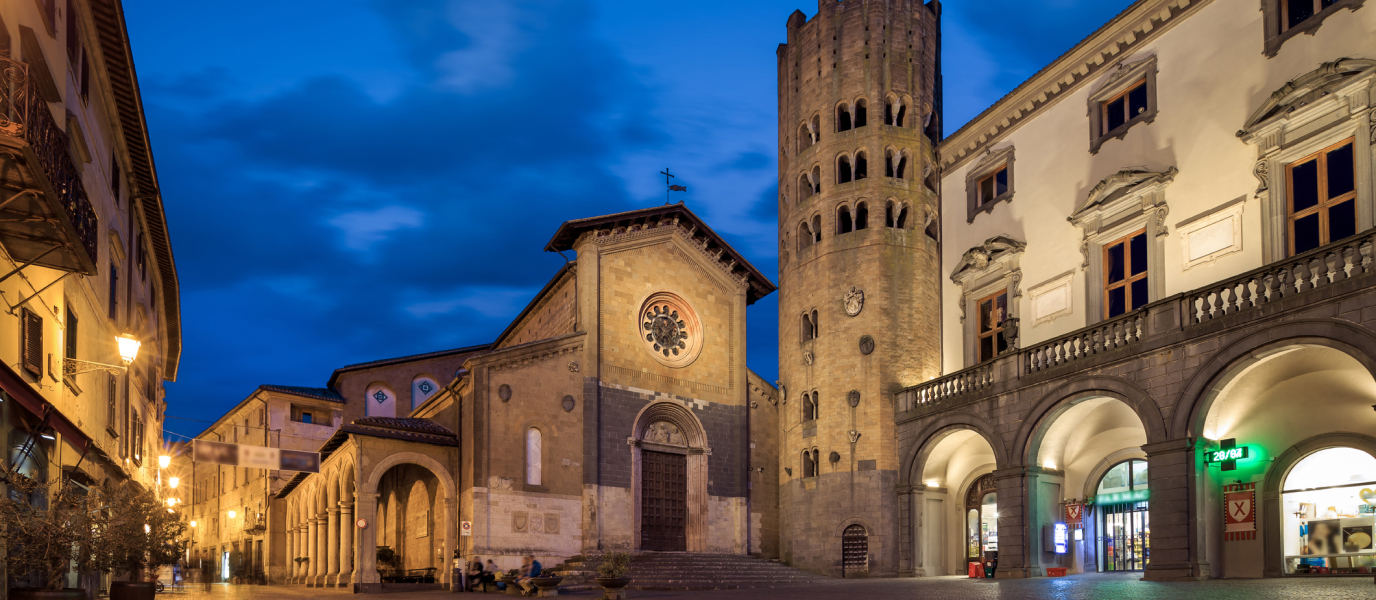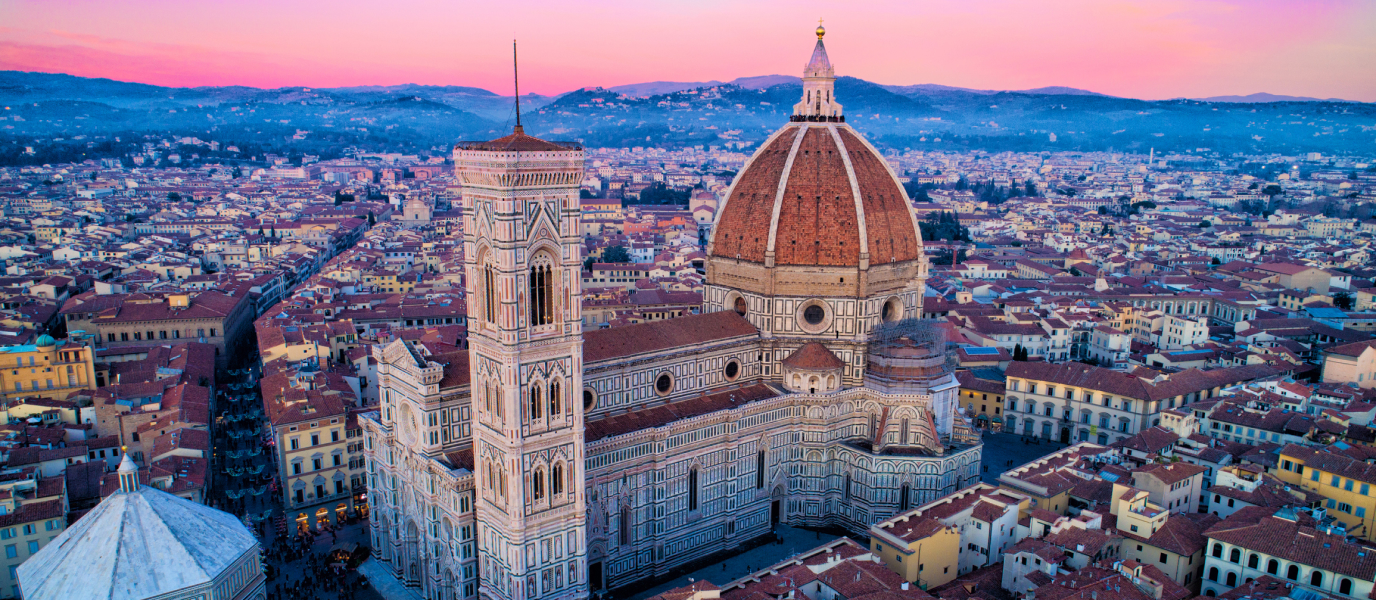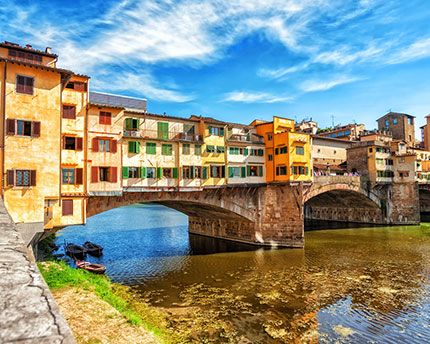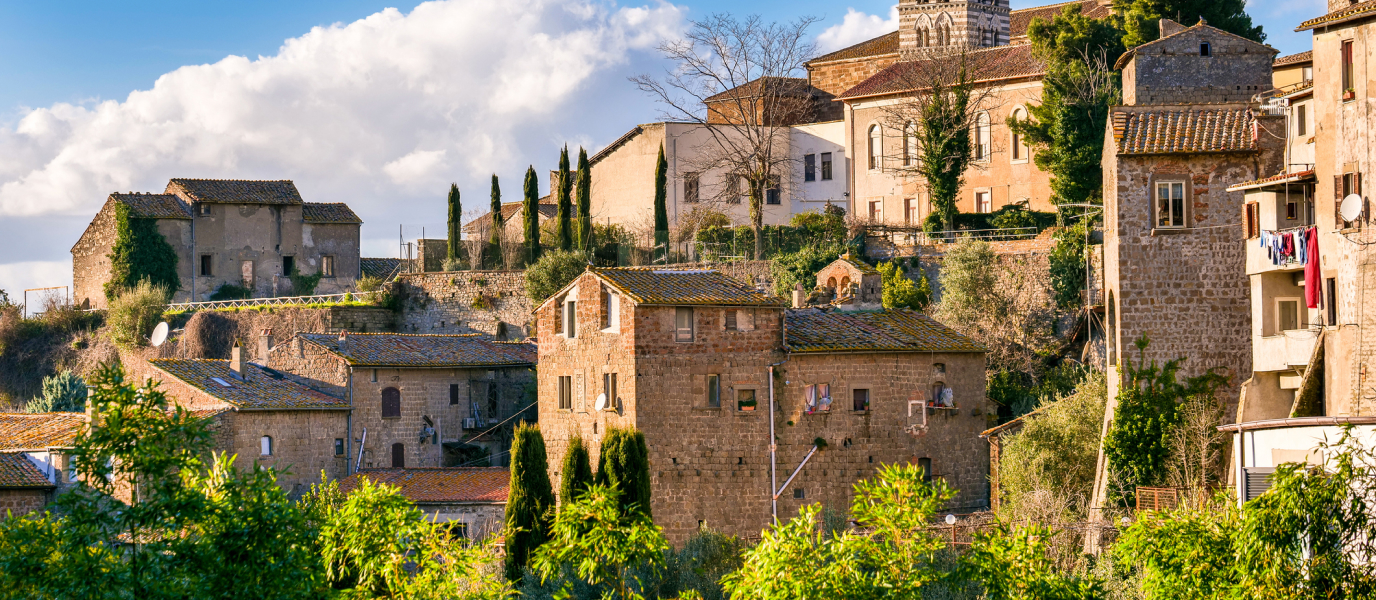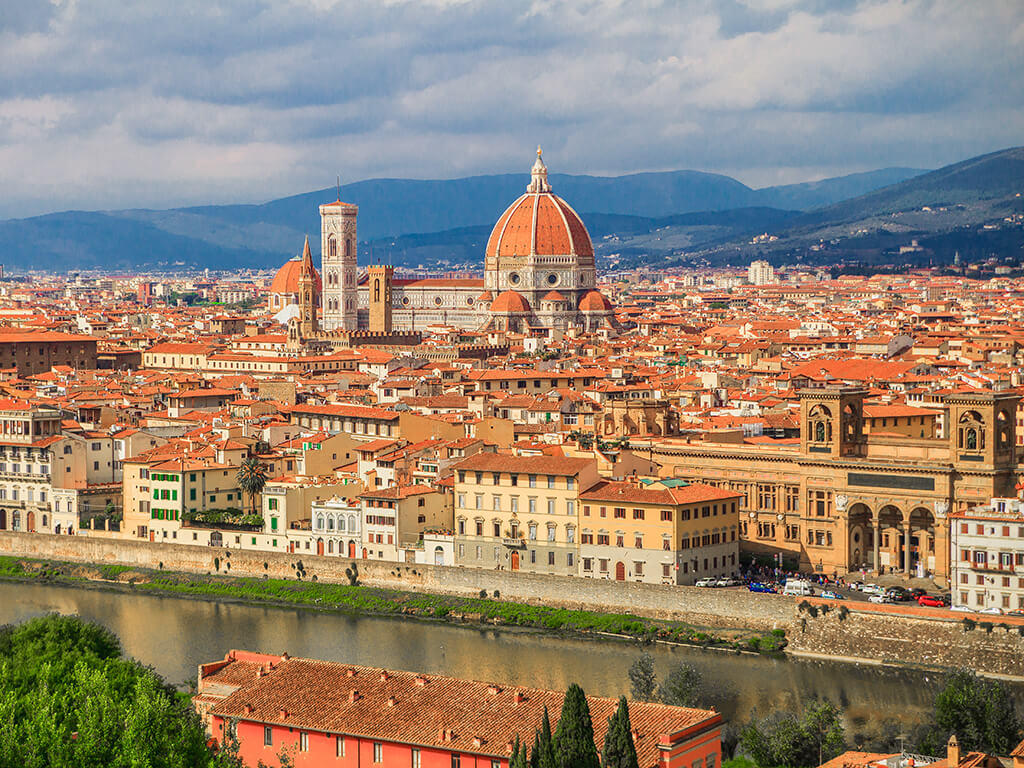The medieval streetscapes of Orvieto seem to be straight out of a fairy tale. Located in the province of Terni, in the region of Umbria, the town is a top attraction between Rome and Florence.
Orvieto looms over a great plain, atop a massive ancient volcanic mound. The town has maintained its old-world charm with its cobble-stoned streets and bursting with wonderful sights – ancient churches, palazzos and museums, including one of the most celebrated gothic cathedrals of Italy.
Duomo di Orvieto
Pope Urban IV ordered the construction of the cathedral of Orvieto at the end of the 13th century to commemorate the miracle at Bolsena, where a priest witnessed the miraculous appearance of blood on a Host he was consecrating. The Holy Corporeal (the altar cloth) from the Eucharistic miracle is housed within the cathedral.
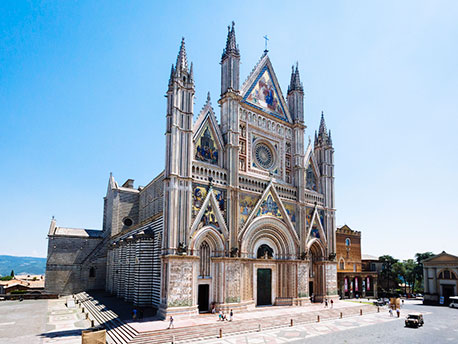
The chief-mason was Fra Bevignate and he was responsible for overseeing the construction of the cathedral, which began in 1290 and lasted several decades. He commissioned the Italian architect and sculptor, Lorenzo Maitani, to design and decorate the façade – a crown jewel of Gothic architecture and art and one of the most beautiful to grace an Italian church.
The richly sculptured marble façade is decorated with brilliant mosaics and sculptures, depicting scenes of the Evangelists and biblical stories of the Old and New Testament. The original mosaics have been replaced and redesigned over the centuries.
The interior of the cathedral is also an artistic and architectural masterpiece. The Cappella del Corporeale houses the Holy Corporal of the miracle of Bolsena. The magnificent gold-plated, silver and enamel reliquary, used to house the corporeal, was made by the goldsmith Ugolino di Vieri. It is a miniature replica of the façade and is carried through the town on the Feast of Corpus Christi, instituted by Pope Urban IV.
The Capella Nuova is also stunning with its 15th-century frescos by artists such as Fra Angelico, one of the most prolific artists of medieval Italy. His work was so impressive he was commissioned by foreign monarchs to produce work for them. Many of his most significant art works are on display at the Capitoline Museums.
Pozzo di San Patrizio
Pozzo di San Patrizio is a spectacular windowed 16th-century well, plunging down 63 m. Pope Clement VII commissioned the Italian architect-engineer Antonio da Sangalla the Younger to build a well to guarantee water supply to Orvieto in the event of a siege by the Holy Roman Emperor Charles V. The Pope had sought refuge in Orvieto during the Sack of Rome in 1527, when imperial troops had attacked the Vatican; an attack on Orvieto was viewed as imminent.
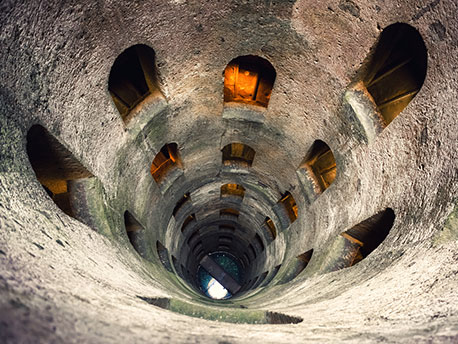
The well was an amazing feat of civil engineering, comprising 72 large windows lining the dual ramps. They were used by people and mules to transport water in and out of the well without obstruction. The well was used to supply water to Albornoz fortress and the surrounding area.
The well was originally called the Fortress Well until the monks of a nearby monastery decided it should be named after the famous Irish saint St. Patrick. They likened the well to St. Patrick’s Purgatory, an ancient pilgrimage site in County Donegal, Ireland. There is a medieval legend that tells the story of an Irish knight named Owein who descends into the purgatory to atone for his sins.
Other top attractions in Orvieto
Pozzo di San Patrizio is not the only historic site located underground; probably one of the most fascinating attractions of Orvieto is the underground system of tunnels and caves that date back to pre-Roman times.
But that’s not the only attractions in Orvieto. Read on to discover our round up of visit-worthy sites!
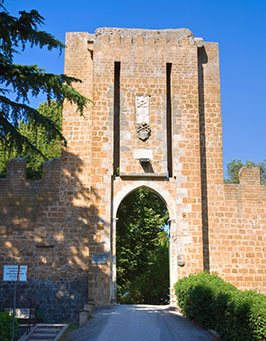
- Albornoz Fortress: this historic fortress was built in the 14th century and abandoned its military functions in the 18th It now serves as a public garden and makes an ideal spot to admire the beautiful views.
- Torre del Moro: the 47 m tower was initially called Torre del Papa since it was the pope who ordered its construction in the 13th It was renamed Torre del Moro after Raffaele di Sante, known as il moro, who acquired it and the adjacent Palazzo Gualterio in the 16th century. Located in the town centre, it provides sweeping views of the townscape and countryside.
- An Etruscan necropolis: these ancient burial grounds date back to the 6th century BC.
- Funicular Bracci: The Orvieto Cable Car was ground breaking when it first started running in the 19th It connects the upper and lower parts of the town. It has a total length of 580 m and rises 150 m. Each cable car fits 75 passengers.



























































